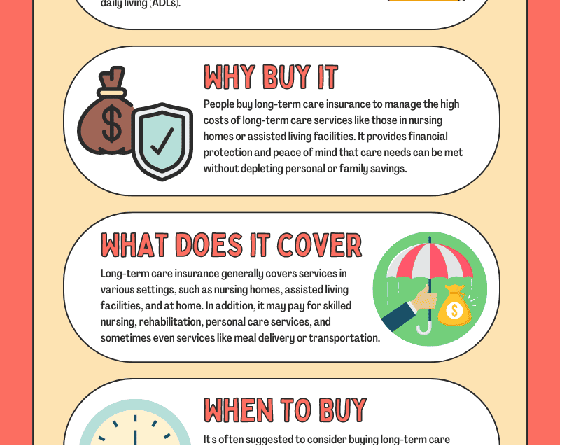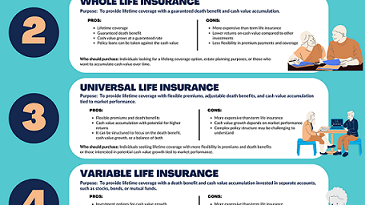The Best Insurance Solutions for You – ssunnel
The Best Insurance Solutions for You
In our increasingly complex financial landscape, the necessity for comprehensive insurance solutions is paramount. With various types of coverage available, including life, health, and long-term care insurance, consumers must navigate their choices carefully to secure their financial well-being. The introduction of tailored insurance products addresses individual needs, providing layers of protection against unforeseen circumstances. For instance, life insurance serves not only as a safeguard for beneficiaries but also facilitates financial planning during the policyholders lifetime, as discussed in the context of financial security . Additionally, as demonstrated in the infographic on asset protection, visual representations of these insurance options can enhance understanding, highlighting their importance in protecting assets and ensuring peace of mind for individuals and families alike . Thus, understanding the spectrum of available insurance solutions is vital for making informed choices that align with personal financial goals.

A. Overview of the importance of insurance in personal and financial security
The significance of insurance in ensuring personal and financial security cannot be overstated, as it serves as a critical safety net against unforeseen events. By mitigating risks associated with health issues, accidents, and property damage, insurance fosters a sense of stability in individuals lives. Furthermore, it plays a pivotal role in facilitating financial planning, allowing individuals to allocate resources effectively while preparing for uncertainties. Insurers often analyze various data points to customize policies, tailoring them to individual needs and circumstances. This aspect of insurance is increasingly relevant in todays world, where economic uncertainties can lead to significant financial distress. Moreover, as highlighted in recent studies, the alignment of insurance services with technological advancements, such as mobile platforms, enhances accessibility for underserved populations, thereby promoting financial inclusion ((Allen et al.), (Buckley et al.)). Overall, the multifaceted benefits of insurance emphasize its role as an indispensable component of personal and financial well-being.
This pie chart illustrates the key roles of insurance in personal and financial security. It shows that insurance contributes 30% to risk mitigation, 25% to financial planning, 20% to technological advancements, and 25% to accessibility and inclusion. These elements emphasize the multifaceted benefits of insurance in enhancing stability and preparing for uncertainties.
This pie chart illustrates the key roles of insurance in personal and financial security. It shows that insurance contributes 30% to risk mitigation, 25% to financial planning, 20% to technological advancements, and 25% to accessibility and inclusion. These elements emphasize the multifaceted benefits of insurance in enhancing stability and preparing for uncertainties.(N/A)
II. Understanding Different Types of Insurance
Navigating the landscape of insurance can be daunting due to the variety of products available, each designed to address specific needs and mitigate risks. Health insurance, for instance, protects against medical expenses and is increasingly provided by employers, although the trend is shifting, leading to discussions on legislative reforms to enhance this coverage (Kaplan A). Meanwhile, long-term care insurance serves an essential function for those planning for aging or chronic health issues, ensuring that individuals can access necessary care without depleting their savings . Furthermore, life insurance provides critical financial support to beneficiaries upon the policyholder’s death, aiding in maintaining financial stability . Understanding these diverse types of insurance is vital, as it equips individuals with the knowledge necessary to make informed choices that align with their financial goals and personal circumstances (Murphy B et al.). Thus, exploring these categories is fundamental to uncovering the best insurance solutions tailored to one’s unique situation.
A. Explanation of major insurance categories: health, auto, home, and life insurance
Understanding the major insurance categories—health, auto, home, and life insurance—is essential in crafting a robust financial safety net. Health insurance provides coverage for medical expenses, thereby safeguarding personal finances against unexpected healthcare costs. Auto insurance is crucial for protecting drivers from liabilities associated with vehicle accidents, while home insurance protects property investments from various risks, including theft and natural disasters. Life insurance, as a financial product, ensures that beneficiaries receive a predetermined sum upon the policyholders death, thereby providing peace of mind and security for loved ones. The complexities of these categories are often influenced by external factors affecting pricing structures and customer needs, such as those identified in recent studies on consumer behavior regarding credit products, which impact decision-making in insurance purchasing (Pellegrino et al.), (Bianchi N et al.). Notably, the effective management of these insurance types can be further understood through the visuals provided in , illustrating the importance of asset protection in holistic insurance planning.
| InsuranceType | Coverage | TypicalPremium | BestFor |
| Life Insurance | Death benefit | $300-$1000/year | Income replacement, debt protection |
| Health Insurance | Medical expenses | $400-$1000/month | Medical care, prescription drugs |
| Auto Insurance | Vehicle damage, liability | $1000-$2000/year | Car owners, drivers |
| Homeowners Insurance | Property damage, liability | $1000-$3000/year | Homeowners, mortgage holders |
| Disability Insurance | Income replacement | 1-3% of annual income | Working professionals |
III. Factors to Consider When Choosing Insurance
When selecting an insurance plan, individuals must carefully assess several vital factors to ensure their choice aligns with both their personal needs and financial goals. One of the primary considerations is the extent of coverage provided by the policy; understanding the specific protections included can prevent significant financial loss in the face of unforeseen events. Another crucial aspect to evaluate is the cost of the premiums relative to the potential benefits, which often necessitates a comprehensive analysis of both short- and long-term financial implications. Additionally, it is important to consider the reputability of the insurance provider, as their claims handling process can significantly impact the reliability of the coverage. Visual representations, such as regarding long-term care insurance considerations, can adequately illustrate the intricacies of various policies and further enhance the decision-making process. Ultimately, integrating these factors will lead to more informed and effective insurance choices, ensuring optimal protection.
A. Key considerations such as coverage needs, budget, and provider reputation
When selecting an insurance policy, key considerations such as coverage needs, budget, and provider reputation are paramount to ensuring optimal protection and financial security. Coverage needs must align with individual circumstances—whether that be health insurance, long-term care, or life insurance—highlighting the necessity to analyze both the scope of coverage and specific policy features ((Stephen N Rosenberg)). Similarly, budget constraints play a crucial role; understanding the costs versus benefits can prevent policyholders from overextending financially while still securing essential protection ((Mendelevitz M et al.)). Furthermore, the reputation of insurance providers should not be overlooked, as it reflects their reliability and service quality. A trustworthiness assessment can significantly affect long-term satisfaction with the policy. In this regard, an image depicting the intricacies of asset protection () may illustrate these elements, underscoring the importance of safeguarding personal resources against unforeseen liabilities, thereby cementing the fundamental balance between adequate coverage and cost-effectiveness.
selecting the most suitable insurance solutions is critical for ensuring long-term financial stability and peace of mind. As highlighted throughout this essay, understanding the intricacies of various insurance options, such as life insurance and long-term care insurance, is essential in developing a comprehensive financial strategy. The insights provided by effectively encapsulate how long-term care insurance can serve as a vital component in this planning process, particularly in mitigating unforeseen healthcare costs. Furthermore, the recommendations from (Buckley et al.) regarding the regulatory frameworks can guide policymakers in enhancing the protection of customer funds, which is crucial for consumer confidence in insurance products. As institutional investors increasingly align their strategies with sustainable development goals, as noted in (N/A), the insurance sector must also adapt to meet evolving consumer needs. Hence, a well-informed choice in insurance not only safeguards individual assets but supports broader financial health.
A. Summary of the best practices for selecting the right insurance solutions for individual needs
Selecting the appropriate insurance solutions requires a methodical approach that considers individual circumstances, preferences, and potential future needs. Best practices involve a thorough assessment of ones current financial situation and long-term goals, ensuring that policies align with personal objectives such as asset protection and retirement planning. Incorporating tools like lifestyle assessments and budgeting strategies facilitates a better understanding of necessary coverage levels, while diversifying insurance types—such as life, health, and long-term care—strengthens financial resilience. Additionally, navigating complex legal frameworks and public program eligibility, as highlighted in the segmentation of the uninsured population, aids in identifying suitable options ((Murphy B et al.)). Visual aids, such as the asset protection infographic, can also illustrate essential concepts that reinforce the need for tailored insurance solutions (). Ultimately, the key lies in being informed and proactive, allowing individuals to secure the best outcomes for their unique insurance needs.



